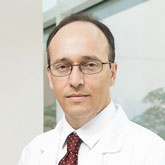Prioritizing stroke outcomes & standardized care with a renewed emphasis on urgency
According to the American Stroke Association (ASA), stroke outcomes have improved dramatically within the last 25 years: Mortality rates from stroke in the U.S. declined almost 40% between 1999 and 2016. This is due to significant progress in the adoption of effective treatments, prevention strategies and rehabilitation.

One reason the U.S. has made such meaningful strides in stroke care is because hospitals work to attain and maintain advanced certification from The Joint Commission. “When a hospital has stroke certification, it means the organization has adopted a standardized set of performance measures and provides high-quality care that helps reduce error and streamline processes to give lifesaving care,” says Karen Bush, MSN, FNP, BC, NCRP, Director of Clinical Research & Education for Clinical Services at HealthTrust.
Still, there is much work to be done. Stroke continues to be one of the top 10 leading causes of death and long-term disability in the U.S., according to the Centers for Disease Control and Prevention. Someone has a stroke every 40 seconds, and someone dies of a stroke every four minutes.
“Time is brain,” so “BE FAST”

To improve the survival rate of stroke, it is critical to educate the public about symptoms and the importance of getting stroke sufferers to the emergency room as quickly as possible—ideally, within three hours. “Time is a very important factor,” says HealthTrust Physician Advisor Daniel V. White, M.D., a private-practice neurosurgeon. “Stroke can be very disabling, and nowadays we have treatments that can make a difference and alter the natural history.”
In 2012, the ASA launched its first FAST stroke public health awareness campaign in partnership with the Ad Council. The campaign has been successful in representing the urgent nature of ischemic stroke and helping people quickly and easily recall the warning signs: Face drooping, Arm weakness, Speech difficulty and Time to call 911.
In 2017, a report published in the American Heart Association’s (AHA’s) Stroke journal suggested that strokes were going undetected with this memory aid and recommended amending the public education program to include two additional symptoms: Balance and Eyes, or BE FAST.

“Everyone should know the BE FAST acronym,” says Jenny Werthman, Ph.D., MBA, RN, NE-BC, Director of Clinical Services at HealthTrust. Just as the AHA has promoted awareness of heart attack symptoms and the notion that “time is muscle,” with stroke, it’s important to know that “time is brain.” According to Stroke, a person loses 1.9 million neurons per minute during a large-vessel ischemic stroke. For every hour that passes without treatment, the brain loses as many neurons as it does in more than three and a half years of aging.
Werthman says there are modifiable risk factors that people should watch for, such as high blood pressure, high cholesterol, obesity, smoking, diet and exercise. While some risk factors are controllable, others, like family history, age and race, are not. “We focus on impacting the ones we can change because prevention is important as well as recognition,” she says.
Advancements in stroke diagnosis & treatment
Remarkable advances in stroke diagnosis and treatment over the last three decades include imaging techniques, which now allow doctors to see what’s happening in the brain and diagnose a stroke more quickly and accurately.
Dr. White has been a practicing neurosurgeon for 20 years. He remembers his training in the late 1990s and early 2000s, when diffusion-weighted imaging via MRI was first introduced. “With CT scanning, you couldn’t diagnose a stroke until 24 to 48 hours later,” he says. “With an MRI, at first, you couldn’t diagnose a stroke right away, so doctors would be trying to decide if it was a transient ischemic stroke or a completed stroke.” If the stroke completed, a person could be paralyzed or die.
Today, a dye injection allows doctors to quickly see the intricacies of the brain regions and pinpoint the area where the stroke is occurring. Emergency IV medications are used to break up clots and restore blood flow to blocked vessels. The gold standard treatment is called tissue plasminogen activator (tPA), or alteplase. It works by dissolving the blood clot that is causing the stroke. The sooner a patient receives it, the better, as there is a critical window of just a few hours where you can restore blood flow and not experience as much brain damage.
For more severe strokes, doctors now use intraarterial techniques like mechanical thrombectomy, where doctors go into the blood vessel with a catheter and pull out the blood clot. They can also deliver tPA directly into the brain where the stroke is happening. These advancements have saved thousands of lives. (See “Brainstorming Solutions” for more information about these and other innovative stroke products.)
How stroke certifications make a difference
The more practice a hospital stroke team has, the more likely patients are to have good outcomes. That’s why The Joint Commission, AHA and ASA teamed up to implement four advanced stroke certifications:
- Comprehensive Stroke Center (CSC) certification, for hospitals with specific abilities to receive and treat the most complex stroke cases
- Thrombectomy-Capable Stroke Center (TSC) certification, designed for hospitals providing endovascular procedures and post-procedural care
- Primary Stroke Center (PSC) certification, for hospitals providing the critical elements to achieve long-term success in improving stroke outcomes
- Acute Stroke Ready Hospital (ASRH) certification, for hospitals or emergency centers with a dedicated stroke-focused program
Dr. White treats patients at several different hospitals in the San Diego area. “If a person is having a stroke, then it’s best to be taken to a facility with a Comprehensive Stroke Center certification,” he says. But if you don’t know, he recommends going to the nearest hospital. “Then you have the possibility of being transferred to a CSC that does meet the requirements of certification,” he adds.
Standardized approach to stroke for better outcomes
It is important and beneficial for hospitals to have a standard, consistent approach to stroke care. “I once heard that if something gets measured, it can be changed,” says Dr. White. When hospitals began measuring door-to-balloon time in heart attack patients, that metric was able to improve. With strokes, hospital teams measure door-to-imaging and door-to-reperfusion time. “These sorts of metrics have been improving because we’re tracking them. Keeping in mind the concept of ‘time is brain’ and the BE FAST acronym, the sooner you recognize a stroke and can treat it, then the better the outcomes.”
“With stroke patients, there is a standardized approach to treatment, so having that awareness gets the patient that treatment sooner,” adds Werthman. “It gets everybody on the same page so that it becomes muscle memory.” Reducing variation improves clinical outcomes and creates a way to measure the effectiveness for future improvements.
How the pandemic affected stroke treatment
In the early months of the pandemic, people were told to stay home to reduce the spread of COVID-19. Hospitals halted elective procedures and used telemedicine in ways they never had before to avoid physical contact. Patients largely stopped coming to the hospital altogether, even for life-threatening emergencies like heart attacks and strokes, which concerned medical professionals.
“One of the fallouts early on in the pandemic was that we told people not to go to the hospital. So they didn’t go to the hospital, even for symptoms of stroke and heart attack, and as a result, procedures to treat these conditions decreased,” says Bush. The Joint Commission reacted by temporarily reducing its volume eligibility requirements for the advanced TSC and CSC certification programs.
The volume standard demonstrates a certain proficiency with stroke patient care. “If I’m going to have surgery, one of my first questions to the surgeon would be, ‘How many of these procedures have you done?’” says Bush. “Because I don’t want to be the first.”
That philosophy applies to certification. If a hospital is not treating a sufficient number of stroke patients, then it becomes a question of competency and the ability to evaluate that competency. Now that patients feel safer and volumes are returning to pre-pandemic levels, The Joint Commission has returned to original eligibility requirements.
As hospitals look toward the future, pursuing stroke certification is a smart strategy. “The public feels better knowing there are independent agencies making sure that quality is maintained,” says Dr. White. Taking this important step makes the community aware of which hospitals prioritize stroke care and make an investment in the staff and equipment needed to perform these lifesaving, subspecialized interventions.
See “Brainstorming Solutions” for more information about innovative stroke products on contract with HealthTrust. To learn more about stroke certification requirements, visit The Joint Commission.
Share Email Cardiovascular, Patient Outcomes, Q1 2022, Standardization





